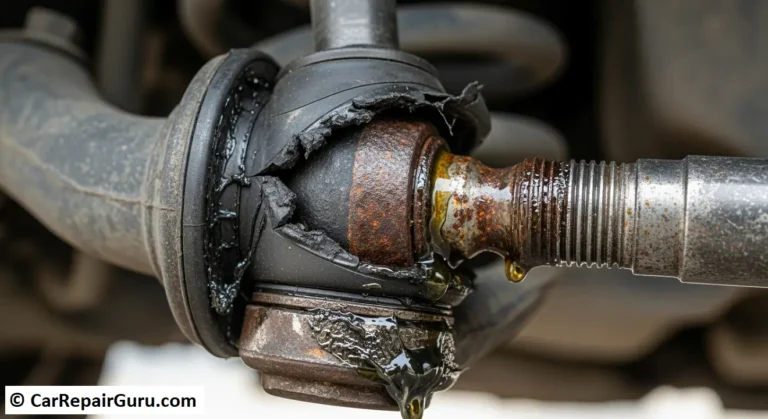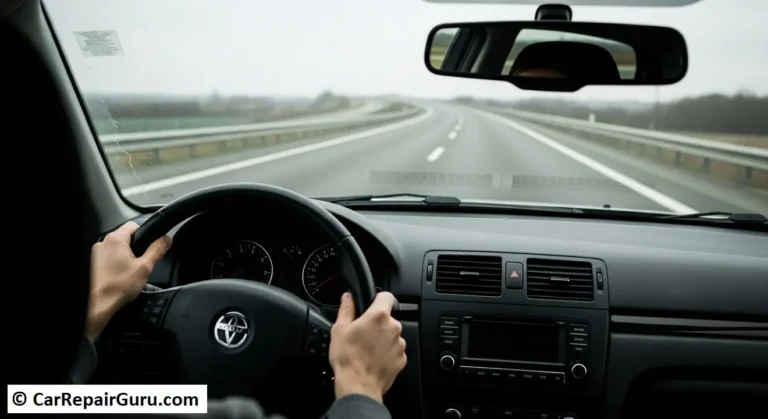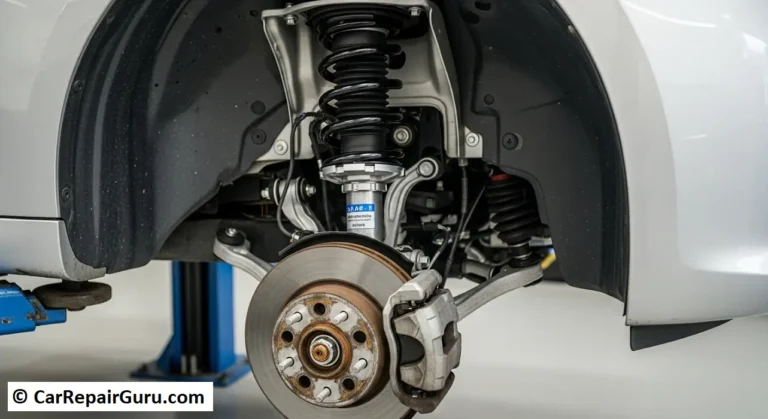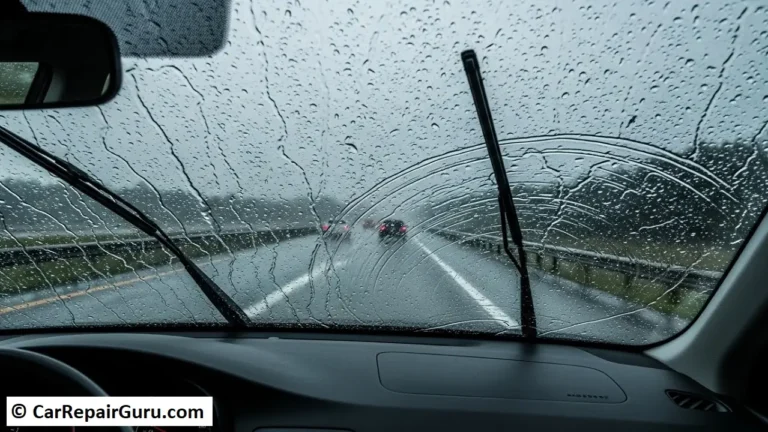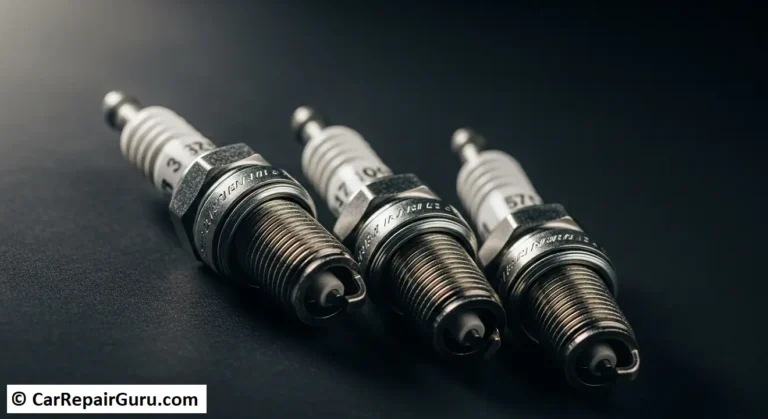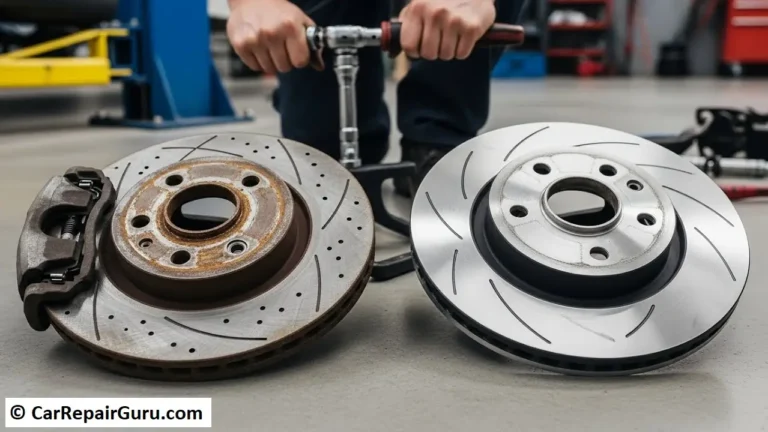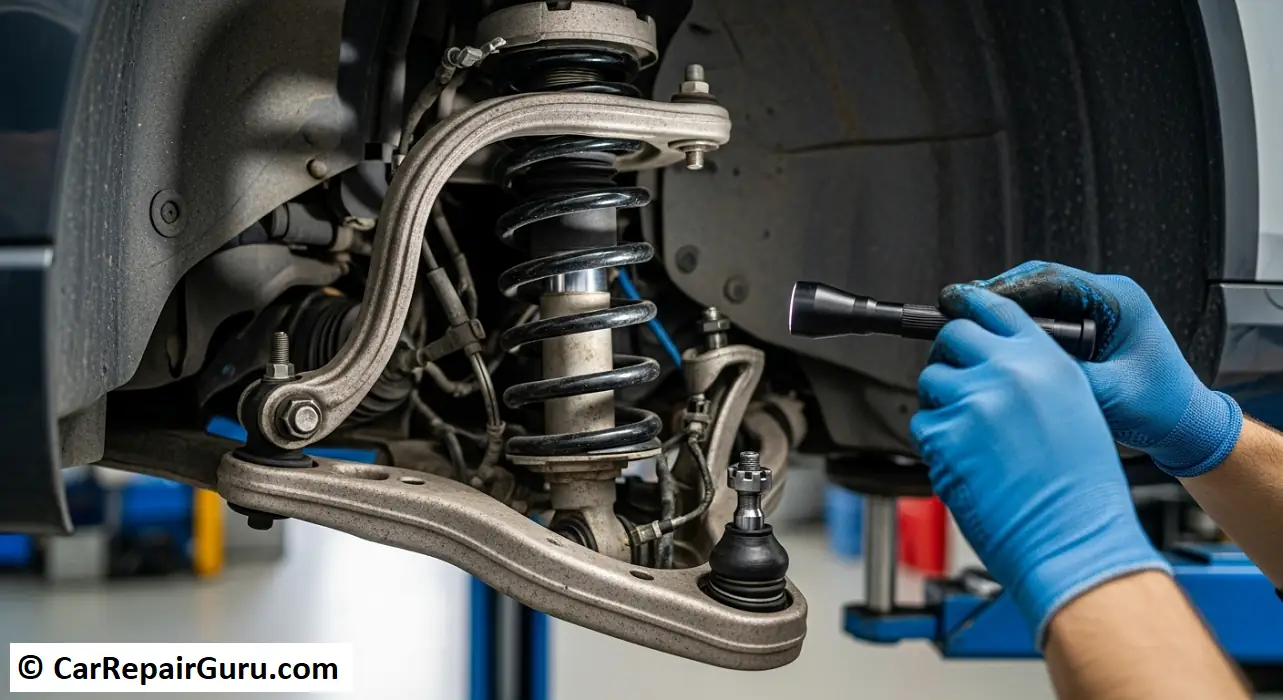
Is your daily drive starting to feel more like an off-road adventure? Do you find yourself bracing for every bump and wincing at every pothole? That rough, jarring ride isn’t just uncomfortable—it’s your car’s way of telling you that its suspension system needs attention.
Your vehicle’s suspension is the unsung hero of your driving experience, working tirelessly to provide a smooth, stable, and safe journey. But like any hard-working component, it wears out over time. A professional suspension inspection is the key to catching issues early, ensuring your vehicle handles correctly, and protecting you from more expensive repairs down the road.
This guide will walk you through everything you need to know about keeping your ride smooth and your handling secure.
What is a Car Suspension System?
So, what exactly is this system that stands between you and the bumpy road? Think of the car suspension system as the sophisticated network of parts that connects your vehicle’s frame to its wheels. Its design is a masterclass in physics, engineered to perform two critical jobs simultaneously:
1. Maximize Ride Comfort: The most obvious job of your suspension is to absorb and dampen the shocks from bumps, cracks, and uneven surfaces. Components like springs and shock absorbers flex and compress, soaking up the impact so you and your passengers don’t have to.
2. Ensure Safe Handling and Control: This is arguably the suspension’s most important role. A healthy suspension keeps your tires firmly planted on the road surface. This constant contact is essential for stable steering, effective braking, and predictable cornering. Without it, your vehicle’s handling becomes sloppy and, in an emergency, dangerously unpredictable.
Key components like shocks, struts, coil springs, ball joints, and control arms all work in harmony to achieve this balance of comfort and control. When one part starts to fail, it can throw the entire system out of whack.
7 Telltale Signs You Need a Suspension Inspection
Your car is excellent at communicating when something is wrong—you just have to know what to look and listen for. If you notice any of the following symptoms, it’s a clear signal that you should schedule a suspension check as soon as possible.
1. A Persistently Rough or Bumpy Ride
This is the most common giveaway. If you’ve started to feel every single crack and pebble in the road, your shocks or struts are likely worn out. They have lost their ability to effectively dampen road imperfections, transferring those jolts directly into the cabin. That feeling that your car feels bumpy constantly is a sure sign something is amiss.
2. “Nose Diving” When You Brake
Pay attention to how your car behaves when you apply the brakes firmly. If the front end of the vehicle dips or lurches forward significantly, it’s a classic sign of worn-out front shocks or struts. This “nose dive” can actually increase your braking distance, which is a serious safety concern.
3. Drifting or Pulling During Turns

Does your car feel like it’s swaying or “rolling” on its side when you take a corner? This unsettling feeling indicates that the suspension components are no longer able to keep the vehicle’s body stable against the force of a turn. This body roll compromises your control and makes handling feel sluggish.
4. It Fails the Simple “Bounce Test”
You can perform a quick check right in your driveway. Go to one corner of your car and push down hard on the fender several times. Let go and observe how it reacts. A car with a healthy suspension will bounce back up once, maybe twice, and then settle. If it continues to bounce three or more times, the shocks or struts at that corner are likely shot.
5. Uneven or Unusual Tire Wear
Your tires can tell you a lot about your suspension’s health. Take a close look at the tread. If you see bald spots or a scalloped/cupped pattern (dips in the tread), it’s often caused by the tire bouncing erratically on the road due to a failing shock or strut. This is one of the most definitive bad shocks symptoms.
6. Visible Fluid Leaks on Shocks or Struts
Take a peek behind your wheels at the shock absorbers or struts. They should be relatively clean and dry. If you see an oily or greasy film covering the body of the shock, it means the hydraulic fluid is leaking out. A leaking shock cannot function properly and must be replaced.
7. Clunking or Knocking Noises
Do you hear a distinct clunking or knocking suspension noise when you drive over bumps, speed bumps, or uneven terrain? This sound often points to a worn-out component, such as a sway bar link, a bad ball joint, or a worn control arm bushing, that is now loose and banging against other metal parts.
What’s Included in Our Professional Suspension Inspection?
When you bring your vehicle to us, you’re not just getting a quick glance. Our certified technicians perform a meticulous, hands-on shock and strut inspection that covers every critical part of your suspension system. We put your car on a lift to get a clear view and physically test each component for wear, damage, and looseness. This ensures we can pinpoint the exact source of any problem and recommend the right solution.
Our multi-point suspension check includes a thorough examination of:
- Shocks and Struts: We conduct a detailed visual inspection for any signs of fluid leaks, cracked bushings, dented housings, or physical damage.
- Ball Joints: We test for any “play” or looseness in the ball joints. A ball joint check is crucial, as a failed ball joint can cause you to lose control of a wheel.
- Control Arms & Bushings: The control arms are inspected for any bending or damage, while the rubber bushings are checked for cracks, rot, or excessive wear that can lead to noise and alignment issues.
- Tie Rod Ends: These are essential for steering. We check them for any looseness that could cause steering wander or vibrations.
- Springs (Coil, Leaf, or Torsion): We carefully look for any cracks, fractures, or signs of sagging that would affect your vehicle’s ride height and stability.
- Sway Bar & Links: These components are responsible for reducing body roll in turns. We inspect the links and bushings for wear or breakage, which are common sources of clunking noises.
- Tires & Wheel Alignment: We analyze your tire wear patterns for signs of suspension problems and check your wheel alignment, as a bad suspension can quickly knock your alignment out of spec.
The Benefits of a Healthy Suspension System
Investing in routine car maintenance, especially for your suspension, pays off in more ways than one. It’s not just about avoiding a bumpy ride; it’s about safeguarding your entire driving experience. The benefits are immediate and long-lasting.
- Enhanced Safety and Control: This is the number one benefit. A properly functioning suspension maximizes tire-to-road contact, giving you shorter braking distances, more responsive steering, and better control during emergency maneuvers. Vehicle safety is directly tied to the health of your suspension.
- Superior Ride Comfort: Rediscover the joy of driving. A well-maintained suspension glides over road imperfections, providing a smooth, quiet, and comfortable ride for you and your passengers.
- Improved Vehicle Performance: From tight corners to highway cruising, your car will feel more planted, stable, and predictable. This inspires driver confidence and makes your vehicle perform the way its engineers intended.
- Prevents Costly Cascade Repairs: A worn-out suspension part puts extra stress on surrounding components, especially your tires. Addressing a small issue early prevents it from causing premature tire wear, alignment problems, or damage to other parts, saving you significant money in the long run.
How Often Should You Get Your Suspension Checked?
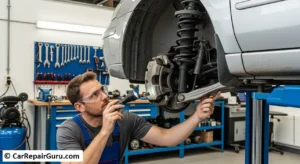
To stay ahead of potential problems, we recommend a proactive approach. So, how often to check suspension components?
As a general rule of thumb, it’s a good idea to have a professional suspension inspection performed once a year or approximately every 12,000 miles.
You should also schedule an immediate inspection if you:
- Experience any of the 7 warning signs listed above.
- Have recently hit a large pothole, a curb, or been in a minor accident.
- Are planning to purchase a used vehicle.
- Are getting new tires installed (to ensure the old ones weren’t worn by a hidden issue).
Regular checks ensure your car’s suspension system remains in peak condition, providing you with peace of mind every time you get behind the wheel.
Schedule Your Suspension Inspection Today!
Don’t let a rough ride compromise your safety or comfort. A healthy suspension system is fundamental to your vehicle’s performance, ensuring stable handling, responsive braking, and a smooth journey every time you drive. Ignoring the warning signs of wear can lead to more significant issues, impacting your tires, alignment, and potentially much costlier repairs down the road.
Whether you’re experiencing persistent bumps, noticing your car “nose-diving,” or hearing unsettling clunks, a professional suspension inspection is your best course of action. Our team is equipped to meticulously assess every component, from shocks and struts to ball joints and control arms, providing you with a clear understanding of your vehicle’s needs.
Reclaim the smooth, secure ride your car was designed to deliver. Prioritize your safety and your vehicle’s longevity—schedule your comprehensive suspension check today and drive with confidence once again.
Frequently Asked Questions (FAQ)
How much does a suspension inspection cost?
The inspection itself is generally very affordable, and many shops may even include it as part of a larger service or offer it at a low cost. The price is for the diagnostic labor to thoroughly check all the suspension components. If any repairs are needed, our team will provide you with a detailed, transparent quote for your approval before any work begins.
Can I drive with a bad suspension?
While you technically can, it is strongly discouraged. Driving with a worn suspension severely compromises your vehicle’s stability and your ability to control it in a critical situation. It can significantly increase braking distances and cause unpredictable handling. For your safety and the safety of others, it’s best to have it repaired promptly.
Is a suspension check part of a state vehicle inspection?
State inspections typically include a very basic safety check of some suspension elements, like looking for obviously broken parts. However, a professional suspension inspection is far more comprehensive and in-depth, designed to find worn parts before they fail completely.
What’s the difference between shocks and struts?
It’s a common question! Both are dampers that control spring movement. The key difference is structural. A strut is an integral, structural part of the suspension and steering system (it replaces the upper control arm). A shock absorber, on the other hand, is a standalone component that only serves to dampen vibrations. Your vehicle will have one or the other at each wheel, but not both.
